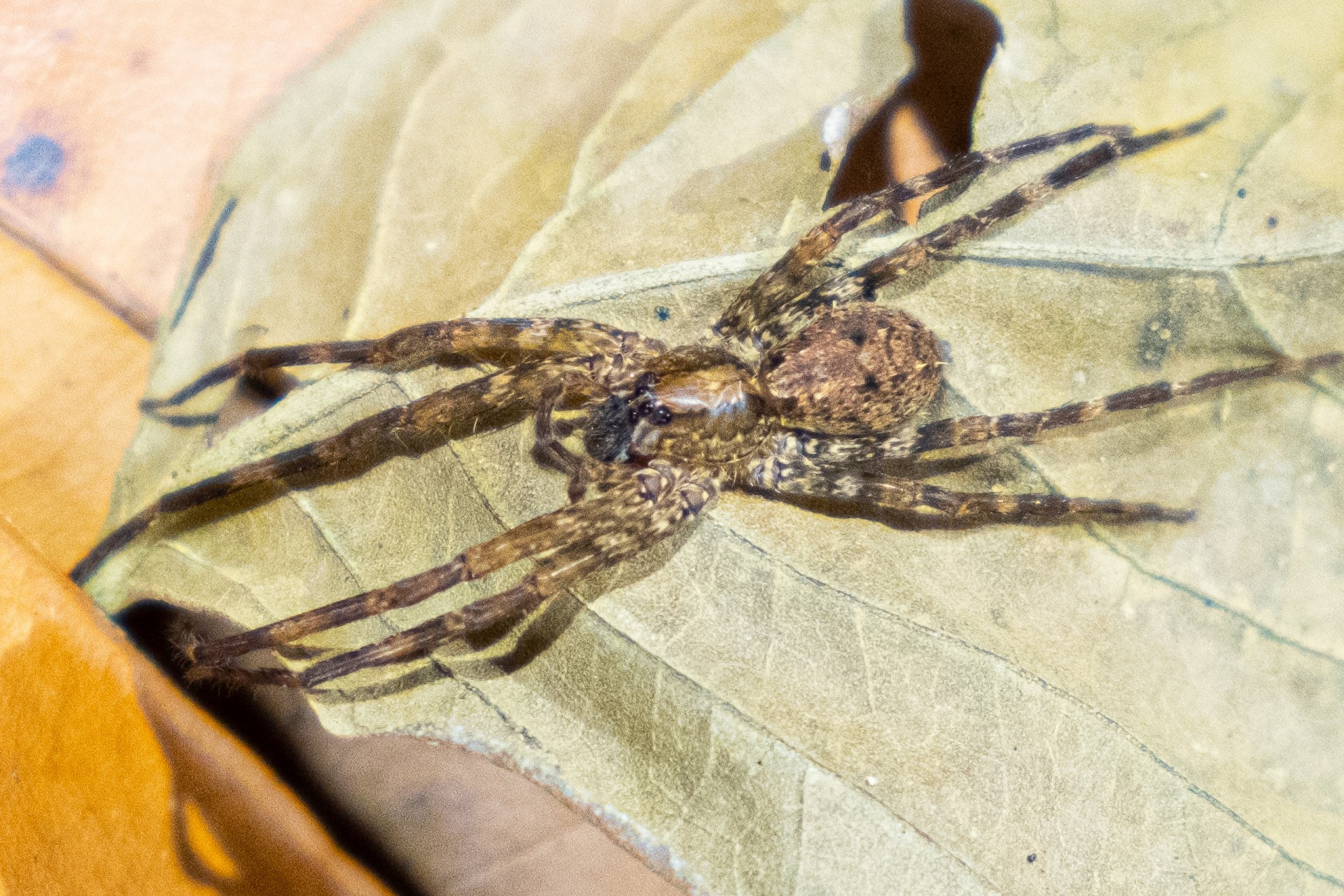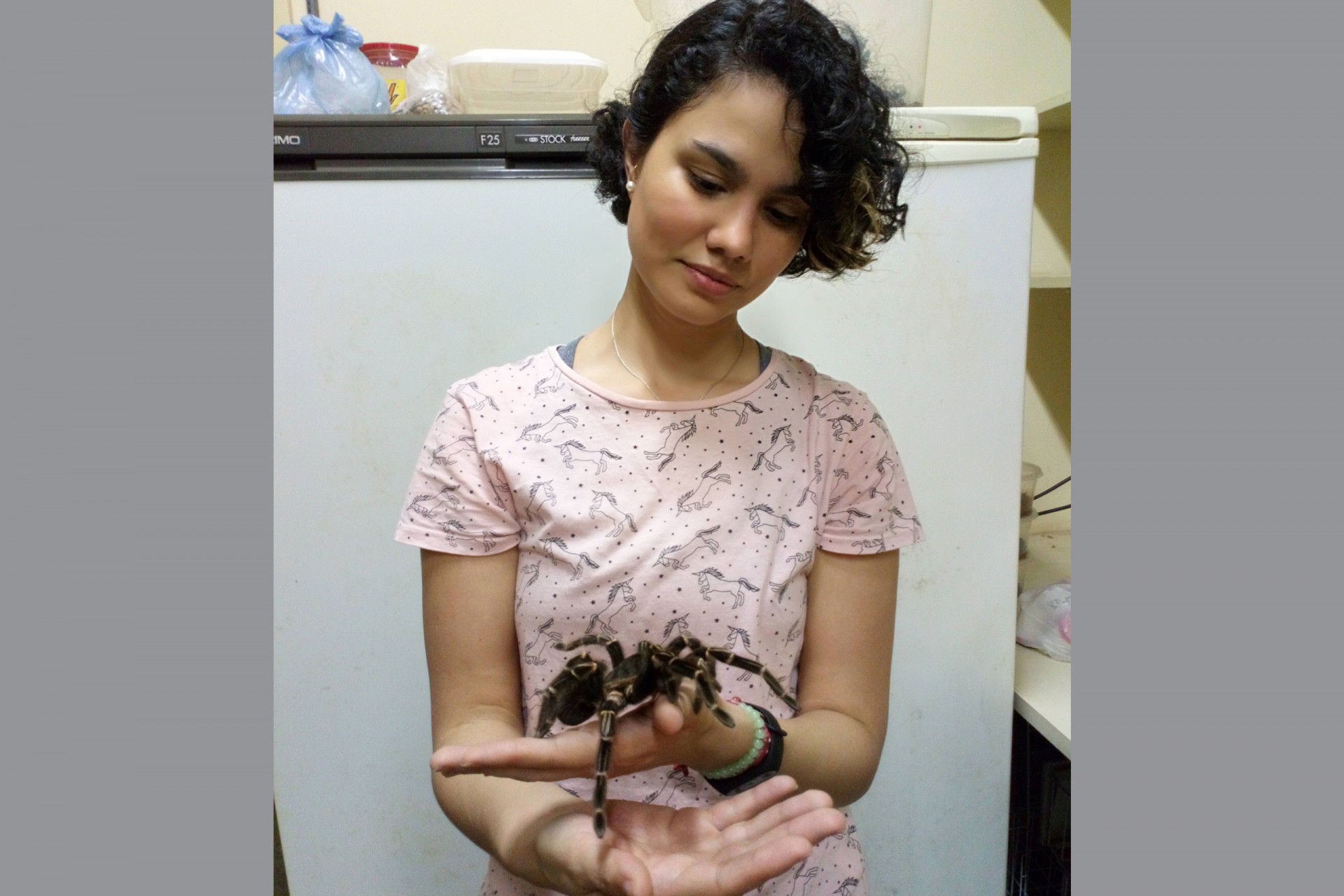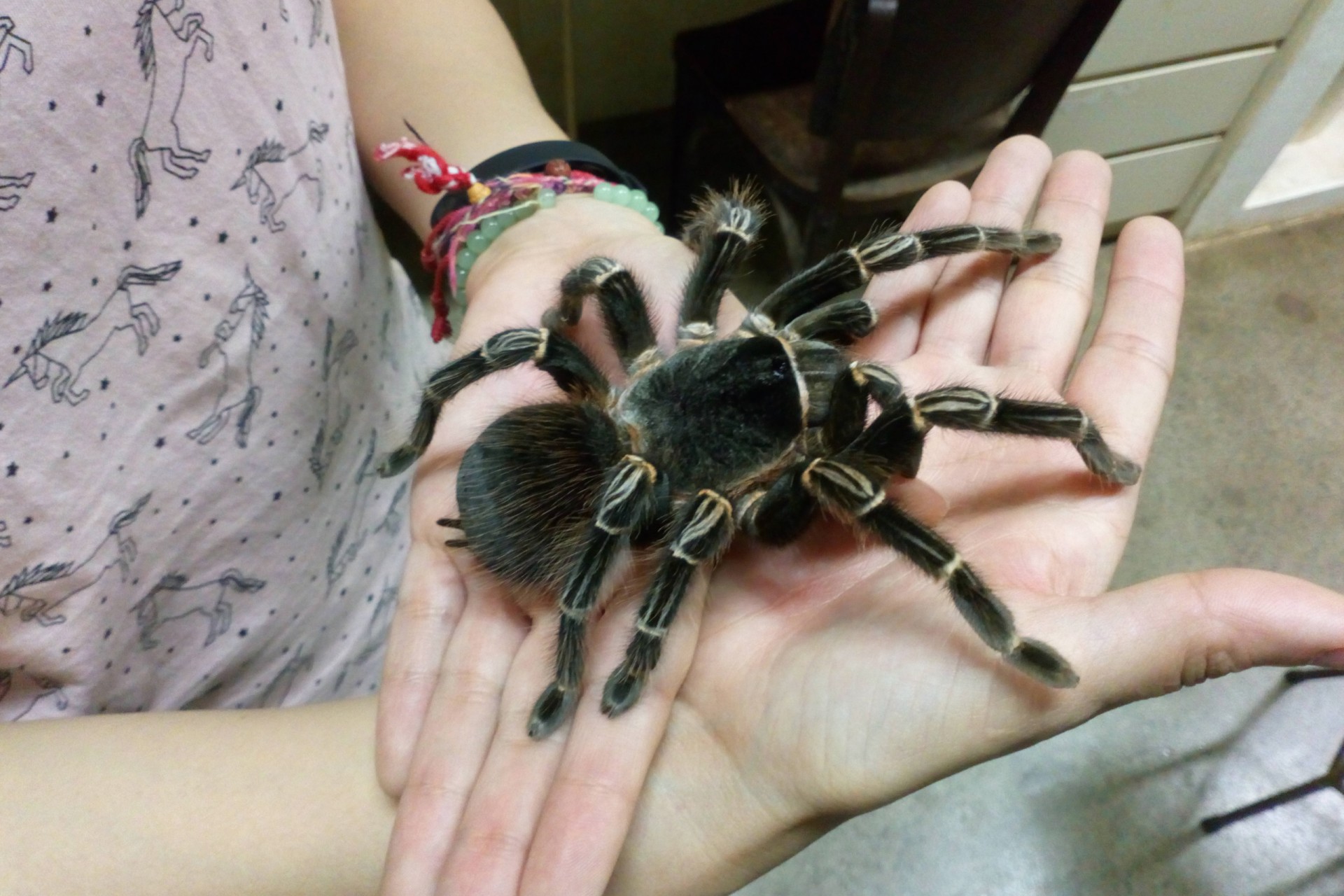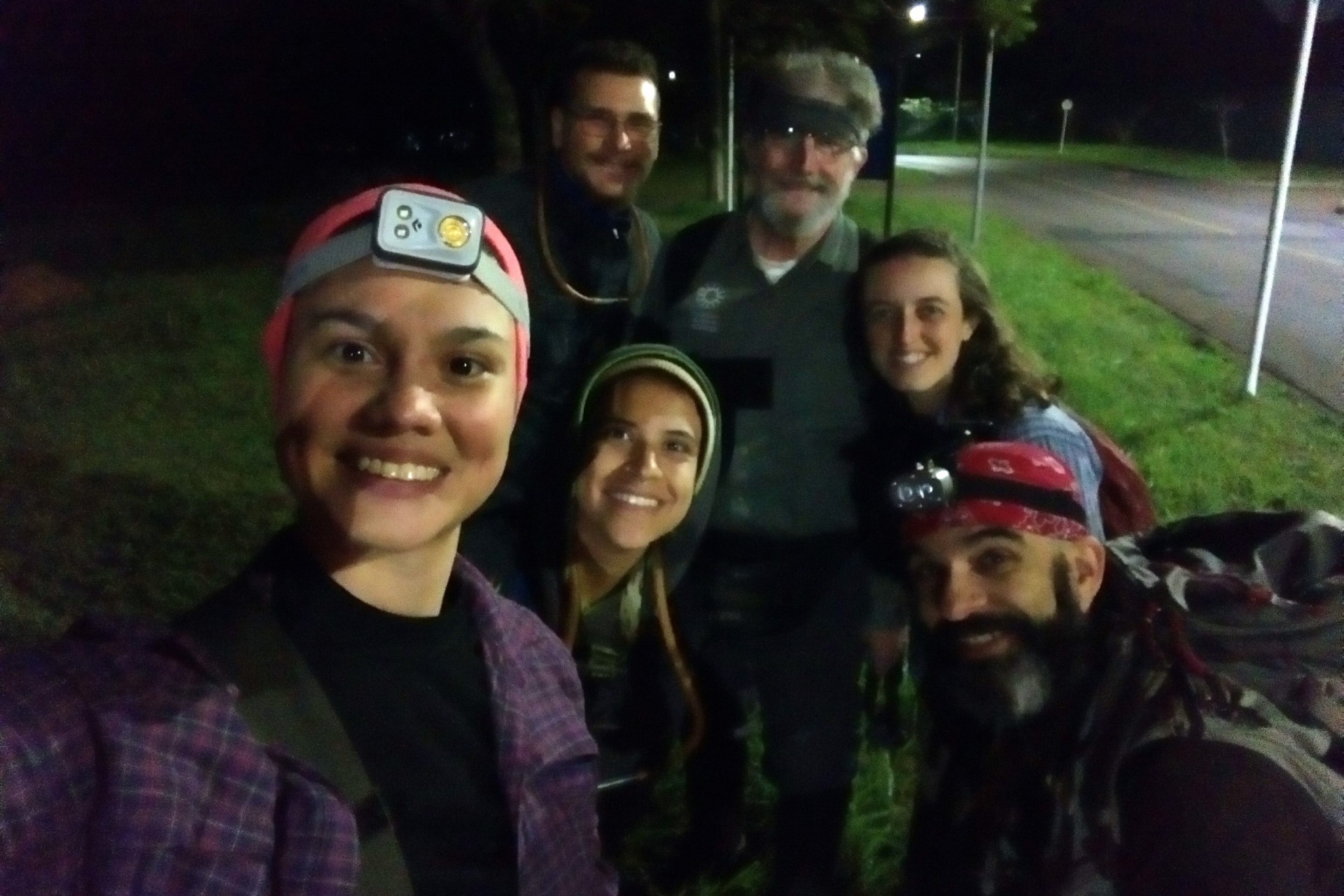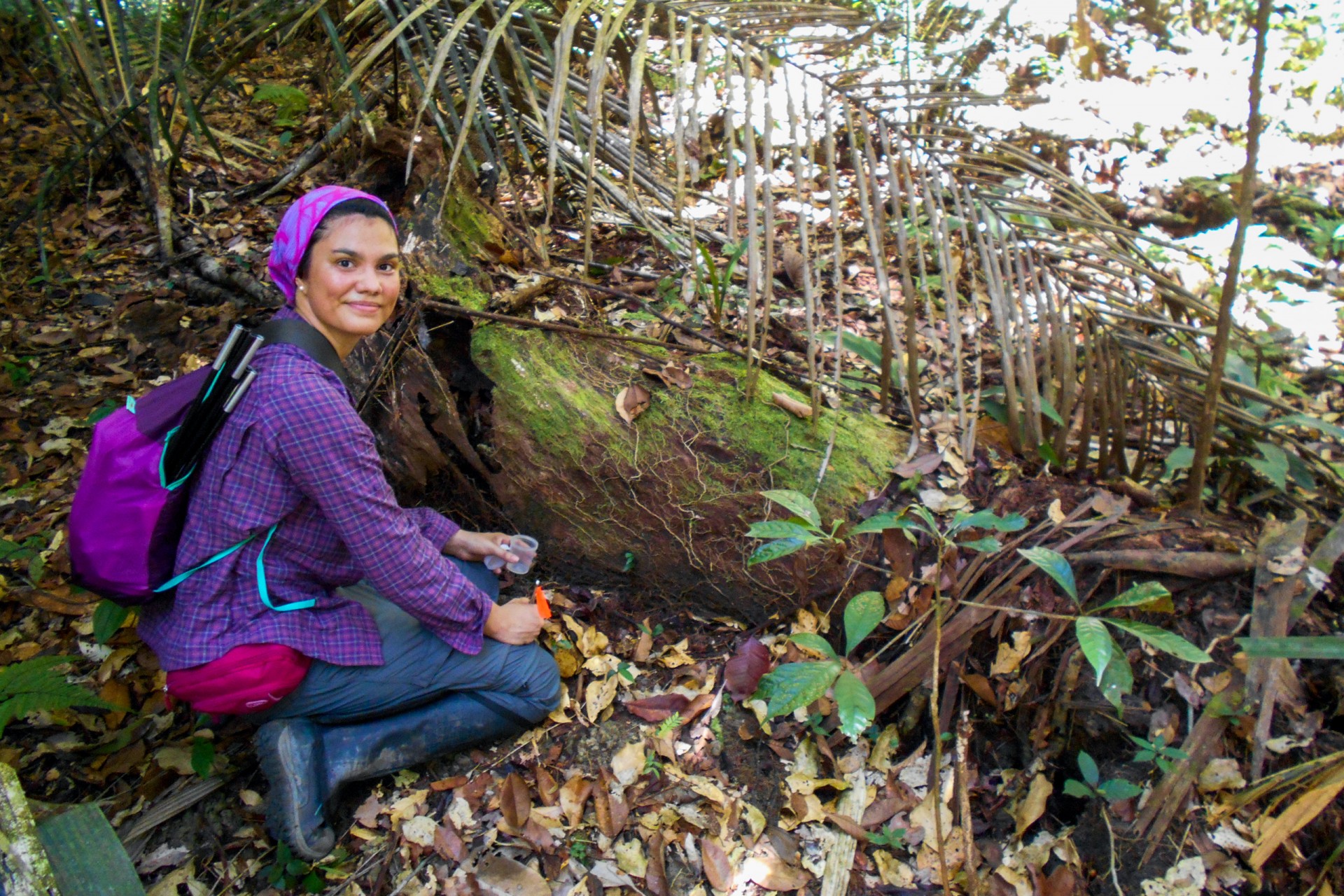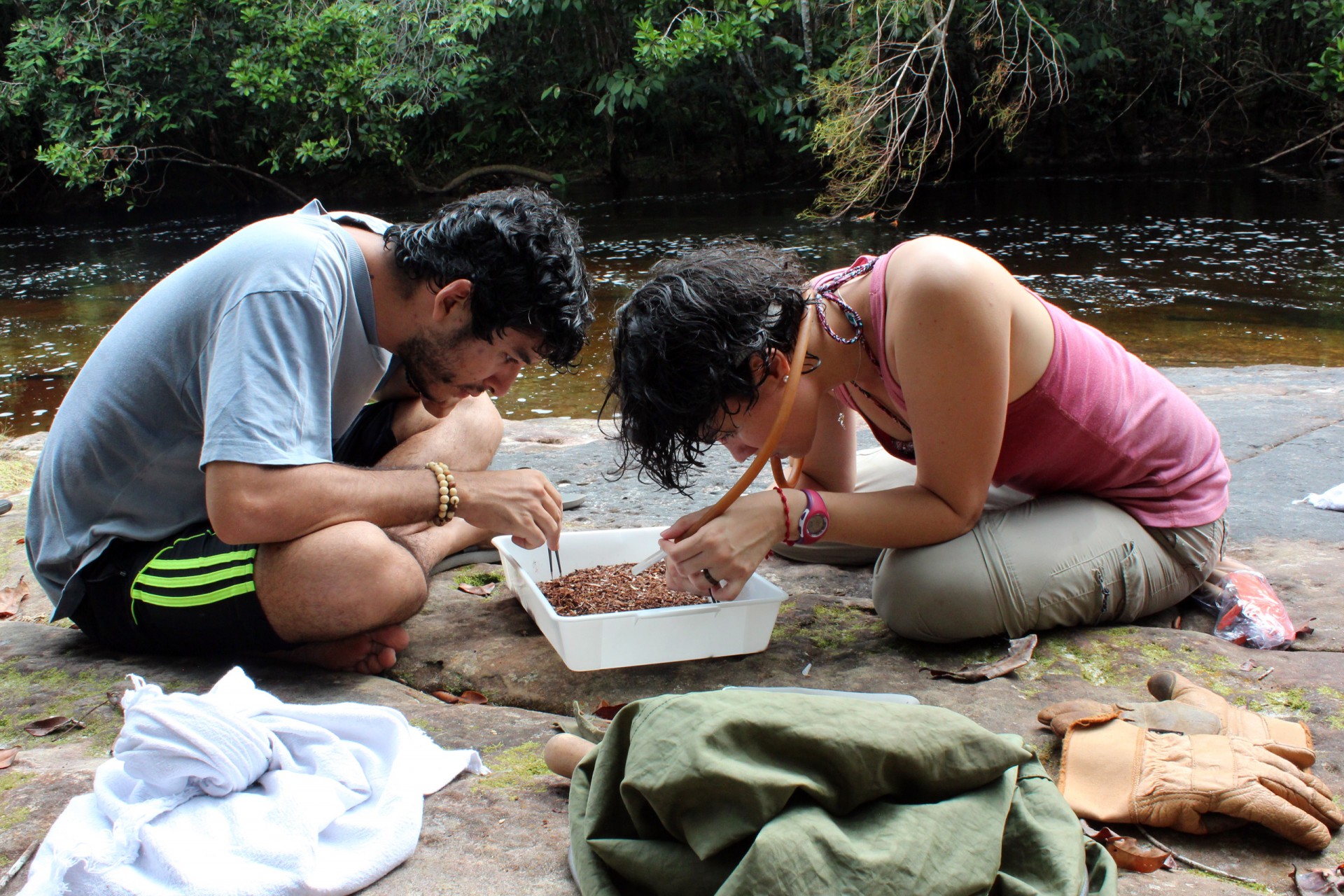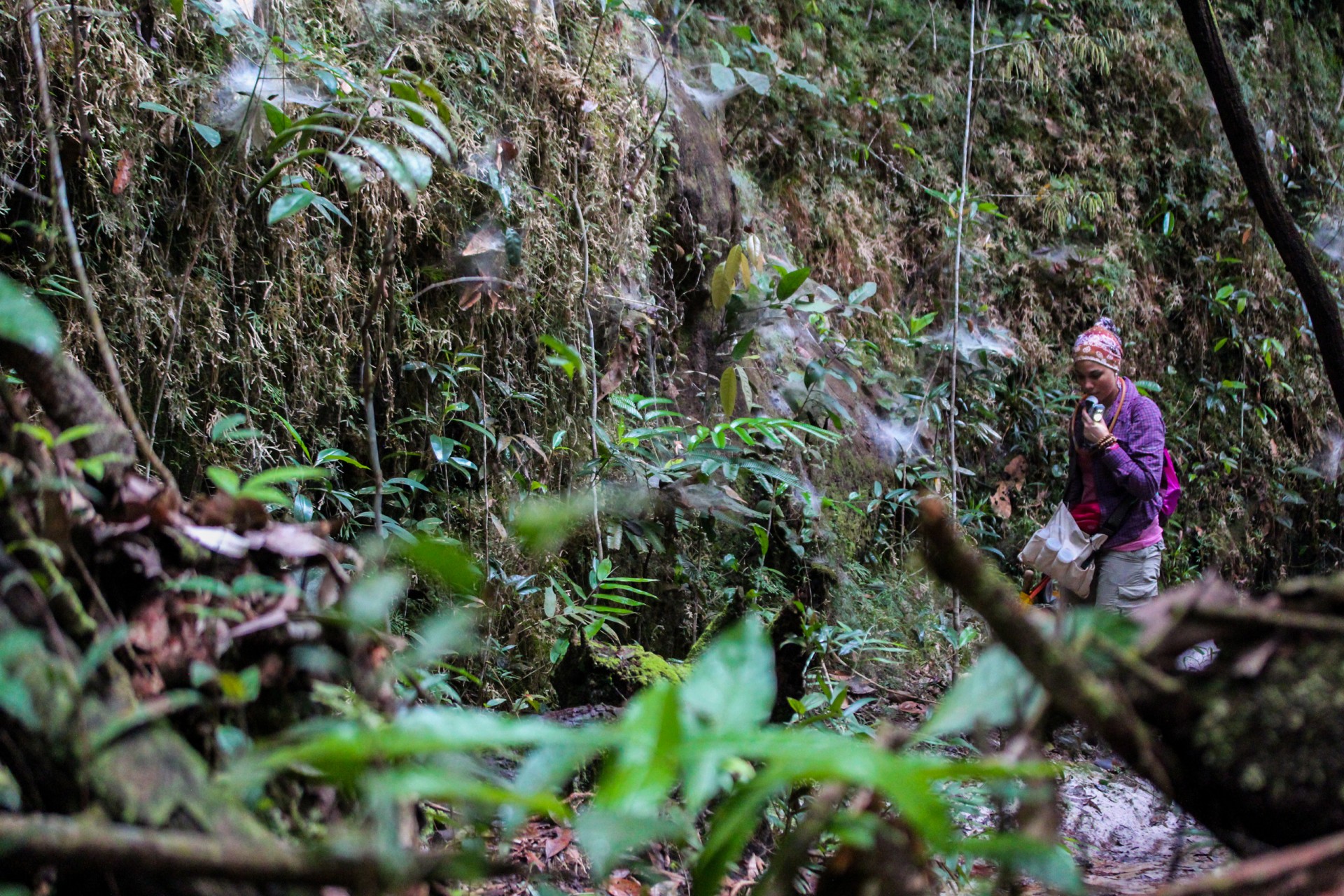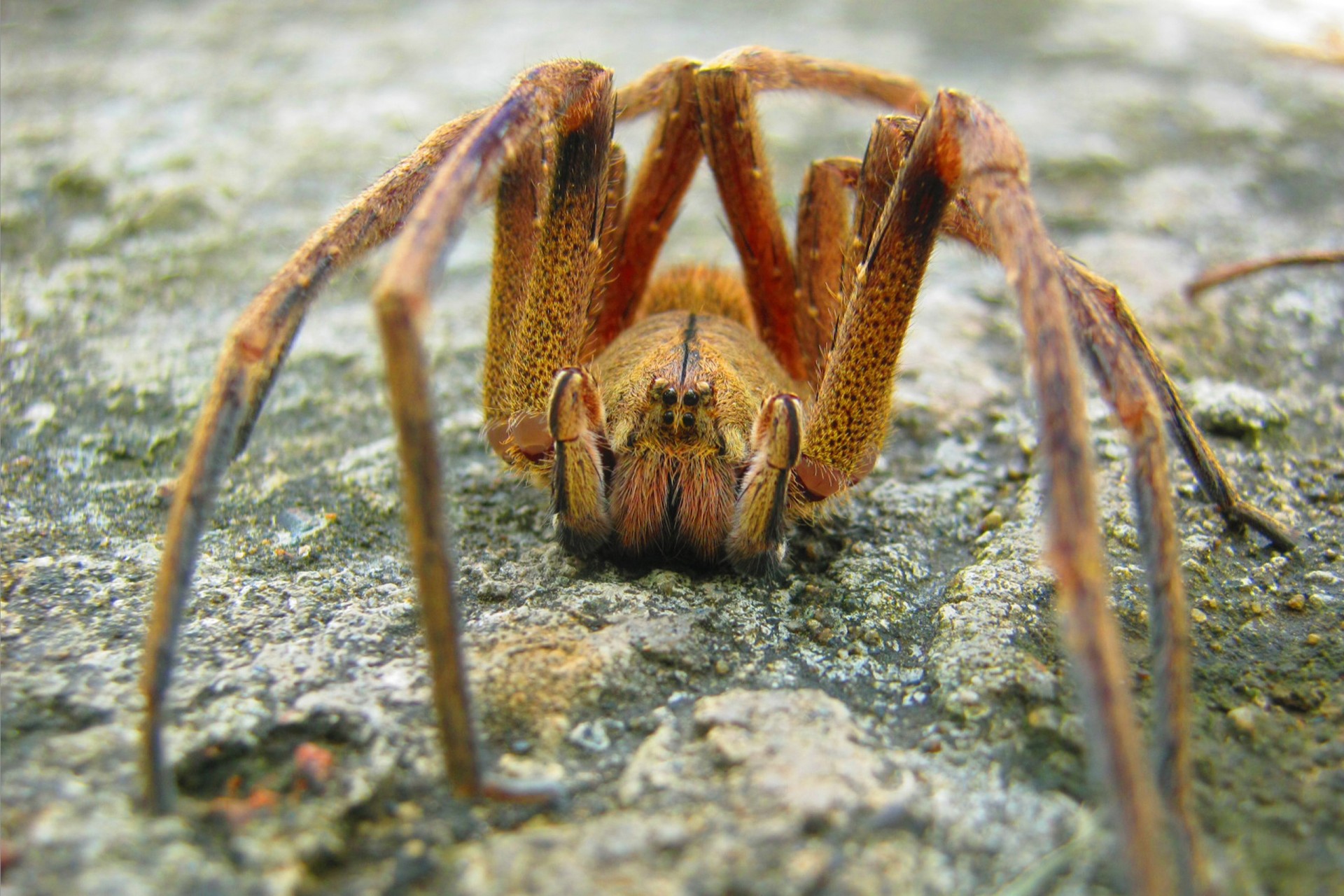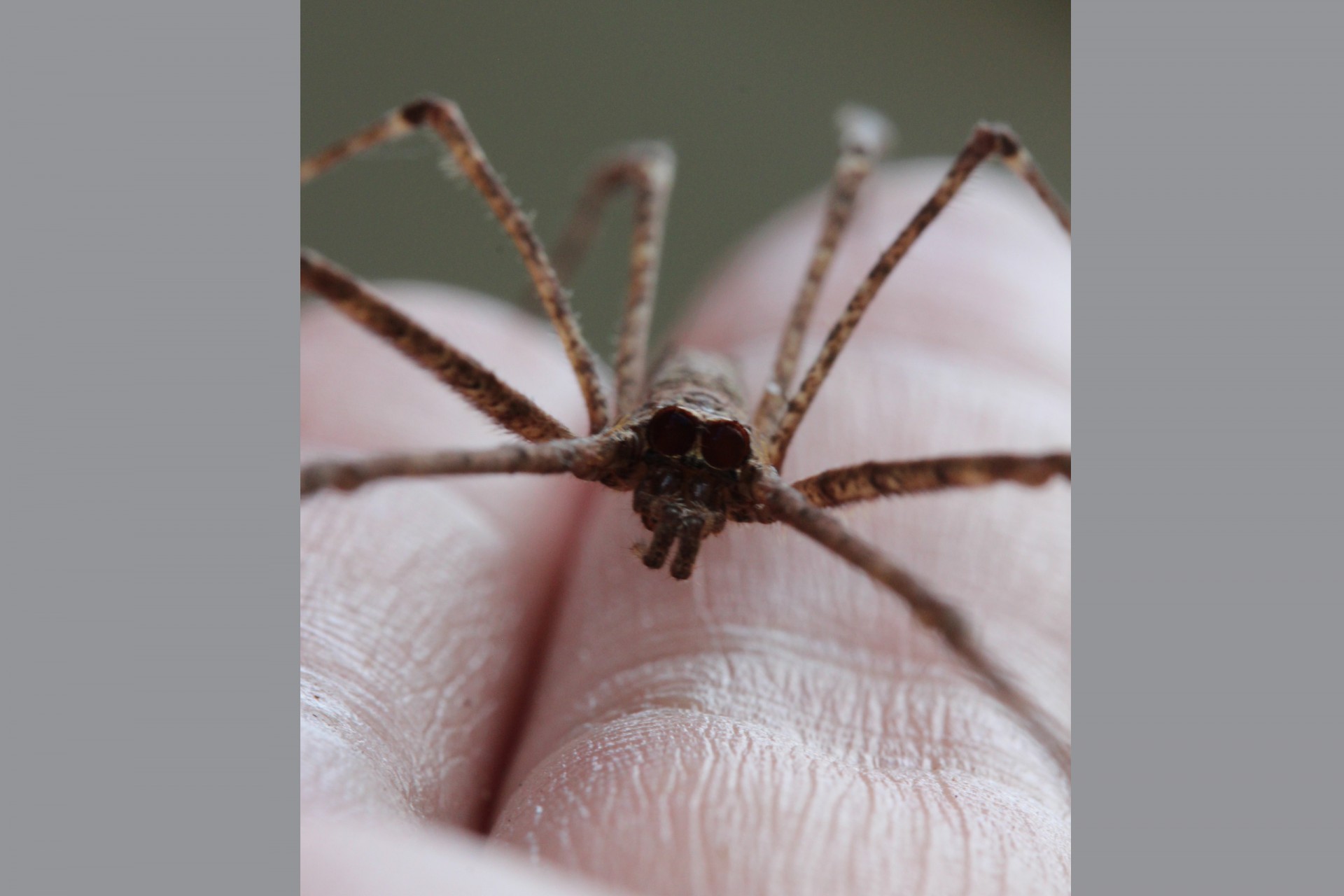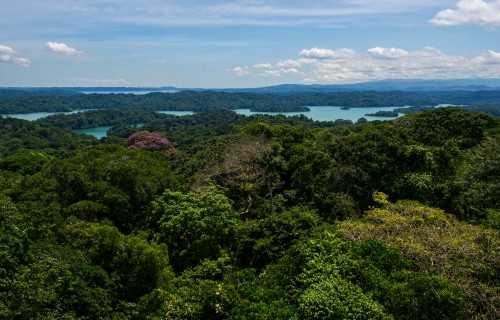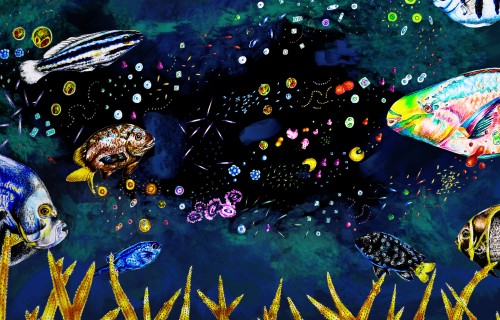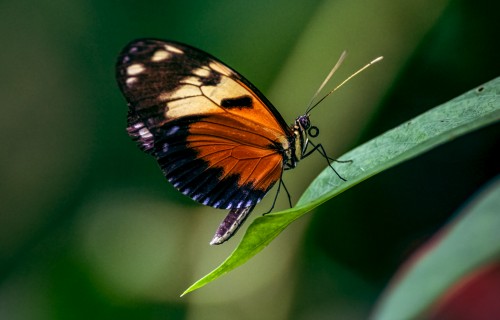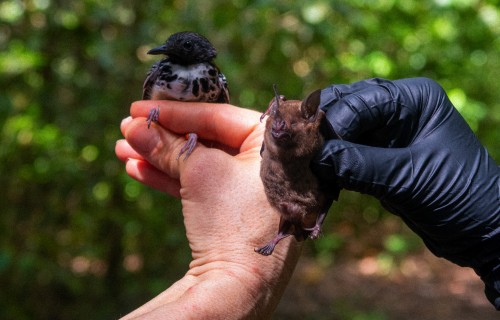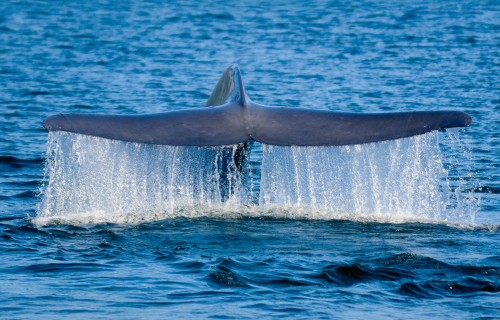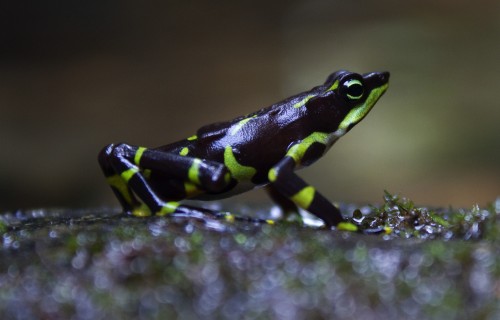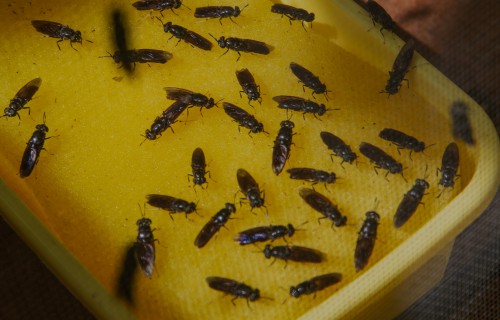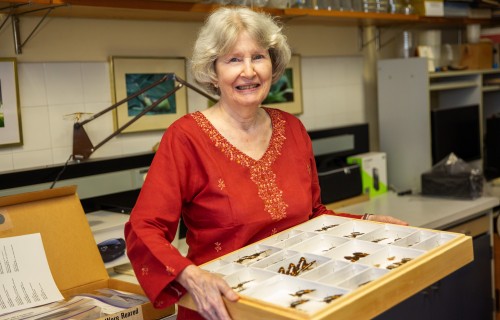Smithsonian science helps understand blue whale migratory and foraging patterns to inform conservation strategies
Into the
Spider-Verse
A young biologist shares her love
for eight-legged creatures
Text by Vanessa Crooks
Self-professed spider-fan and arachnid systematist Stephany Arizala would like more people to study this megadiverse group, so that we can do a better job of protecting them.
When Stephany Arizala was about ten years old, a spider landed on her hand and, instead of being scared or swatting it away, she was curious.
“The spider was looking at me as intensely as I was looking at it; I moved, and it seemed to follow me. It wasn’t trying to harm me or anything,” she shares. Later she would find out that it was a jumping spider, from the Salticidae family, the largest family of spiders, known for their large eyes, excellent vision and, as their name says, their propensity to pounce on their prey.
Looking at their family tree, the spiders are members of the Arthropods: they have two major body parts, the cephalothorax and abdomen. They are closely related to scorpions, ticks, mites and daddy long-legs—all members of a class of eight-legged organisms called arachnids. Spiders, the order Araneae, have mouthparts (chelicerae) with fangs to inject venom, and spinnerets to produce and extrude silk.
Acanthoctenus manauara female. Crédito: Arizala et al. 2021.
Arizala’s fascination for spiders grew with her; she studied biology at the University of Panama and has a Master of Science in Animal Biology and Biodiversity from the University of Campinas (UNICAMP=, in Brazil, where she specialized in arachnid taxonomy and systematics. She is now one of just a few arachnologists in her native Colombia and in the region.
“Among my favorite families is the Deinopidae, commonly known as the ogre-faced spiders. But they don’t have an ogre face; they are very cute,” she points out. “Their posterior median eyes are very big and beautiful. They also have an impressive hunting strategy: they hang from their back legs, grab their spiderweb with their front legs, and cast it like a net to capture their prey.”
Recently Arizala published the results of her master’s thesis with her supervisors Facundo Martín Labarque, arachnologist of the Universidade Federal de São Carlos (UFSCar), and Daniele Polotow, UNICAMP biologist, in the scientific journal Zootaxa. In the paper, called Revision of the Neotropical spider genus Acanthoctenus (Araneae: Ctenidae: Acanthocteninae), she identifies five new neotropical species found in Panama, Guatemala, Brazil and Bolivia, and validates two species from Venezuela and El Salvador.
Acanthoctenus chickeringi female from Gamboa, Panama. Crédito: Stephany Arizala.
“The genus Acanthoctenus is distributed across America, and we found these new species that were previously considered all one single species from Mexico to Colombia,” Arizala says. “There were also new species in the Amazon, and I was able to describe one of those.”
One of the species from Panama was Acanthoctenus chickeringi, found on Barro Colorado Island and in Gamboa, and it was named for Arthur Chickering, one of the first arachnologists in Panama, who described hundreds of species. Acanthoctenus lamarrei, the other species, was named for Greg Lamarre, STRI entomologist, for all of the help he gave Arizala.
“Before I had only seen Acanthoctenus chickeringi in vials, and to be able to see it live was amazing. They are very beautiful,” she says. “Panama has an impressive diversity of spiders: the spiders you find changes so much depending on where you are in the country: the Pacific, the Atlantic, the islands.”
“My favorite place to study spiders is the Amazon, the diversity there is incredible as well. For example, you might find the same genus of spider on both sides of a river, but the species is completely different on each side, because the river acts as a barrier,” she says. “Also, they have some very large species; coming face to face with the Theraphosa blondi was astonishing, since I had only seen it before in pictures and documentaries,” she adds. The Goliath tarantula, Theraphosa blondi, is the largest spider in the world, measuring up to 30 centimeters in diameter. “It’s bigger than my head,” Arizala laughs. “They hunt and eat small vertebrates, like lizards, toads, some birds, etc., and they can be very strong, carrying prey up to two times their own weight.”
Arizala still cannot believe how few people study spiders, considering they comprise one of the most diverse orders of organisms in the animal world. She estimates that there are 49,824 species and 129 families of spiders documented so far, and scientists believe that there might be twice as many. Except for Antarctica, spiders can be found in every continent; they have adapted to even the most unpredictable environments, such as aquatic habitats.
But why are there so many spider species?
“It’s amazing how they have managed to adapt to and colonize almost every ecosystem,” she says. “There is something they do called ‘ballooning’, which is how they ‘fly’ (having no wings or anything like that) when they just come out of the egg, or sometimes when they are adults, they release a bit of silk to the wind and let themselves go, gliding in the wind like a kite.”
“There some that mimic other insects, like ants or beetles, they look like them and move like them, and even interact with other ants or beetles.”
Night collection with famous arachnologist Charles Griswold at the Cerrado Brasilero in 2019. From left to right: Arizala, Maria Paula, Pedro, Charles Griswold, Daniele Polotow y Facundo Martín Labarque). Crédito: Stephany Arizala.
Despite their adaptability, the biggest threat to their survival is humans, as we change and destroy their habitats. “The contamination and deforestation we have caused has really impacted populations,” Arizala points out.
And people’s negative perceptions of spiders do not help, either. Spiders’ association with Halloween began with a connection to witches: in medieval times black cats and spiders were believed to be their evil companions.
“There’s even a phobia named for them: arachnophobia. But we hardly ever hear about the phobia toward cockroaches, which people also dislike a lot,” Arizala muses. “People tend to be afraid of things that look different and automatically regard them as ugly and dangerous. It’s very common for parents to unconsciously pass these biases to their kids, and kids grow up being afraid of these animals without knowing why. It would be nice to teach children from an early age about spiders and insects, and that they have nothing to fear.”
She recommends a YouTube channel that features an adorable, animated jumping spider, with huge eyes and furry legs; Lucas the Spider, voiced by the creator’s young nephew, who sings funny songs, plays instruments and has silly adventures, and is meant to show that spiders don’t have to be scary.
Arizala also clarifies that, although most spiders can bite and produce venom, the level of toxicity of most venoms is not dangerous to humans at all. And almost none of the spiders that are dangerous to humans are found in places where people live, apart from Chile, Uruguay and Argentina, where there are cases for example with the genus Loxoceles.
“In Panama, for example, there is the genus Phoneutria or banana spider, which as its name says is often found in the banana plants, and its bite does require medical attention, because there have been many cases of an allergic reaction. But people who work in picking bananas know that they must be careful,” Arizala points out.
Despite their bad rap, spiders can be very helpful around the household, feeding on insects.
“They are predators in the ecosystems. They have a very important role as population control,” explains Arizala. “They are also bioindicators; depending on the species or groups of spiders that we find in a particular ecosystem, we can figure out if the ecosystem is preserved, or if there has been human influence.”
They are also a source of inspiration. Researchers have studied spiders’ silk for its resistance and elasticity in the production of objects like bulletproof vests, and even in the biomedical field, the proteins in the fibers of spider’s silk have been tested in the repair and replacement of human tissue in joints.
Arizala holds a tarantula (family: Theraphosidae) at the backstage of a morning show in Frankfurt, Germany en el backstage de un programa matinal de Frankfurt (Alemania) with Peter Jäger, famous German aracnologist. Crédito: Stephany Arizala.
Many mythologies feature spiders, in Ancient Egypt, Sumeria, Greece and Rome, Africa, North and South America, Oceania, Asia and post-classical Europe. “My favorite is the ancient Egyptian representation, in which the spider was associated with the goddess Neith, and referred to as the weaver of fate,” Arizala says.
Spiders are prominent characters in literature and pop culture: Arachne in Dante’s Divine Comedy, the terrifying Shelob in the Lord of the Rings books and Aragog in the Harry Potter series as well as being the benevolent protagonist of Charlotte’s Web and the friendly Miss Spider in James and the Giant Peach, and the superhero Spider-Man.
“I’ve been bitten many times by spiders, but I haven’t gotten superhero powers,” jokes Arizala, who is a big Spider-Man fan. “It’s funny because the radioactive spider that bites Spider-Man is depicted as a black widow, a Latrodectus manctas, which would normally cause severe damage after biting.”
Regarding the Marvel superhero’s highly anticipated third film, Spider-Man: No Way Home, Arizala says that she’s so excited that she might show up to the theater in a Spider-Man costume. “I already have my tickets to go see it this week,” she said.
She wishes more people were curious about spiders. In Panama, as far as Arizala knows, only Diomedes Quintero, her professor at the University of Panama, and Roberto Miranda from the Gorgas Memorial Laboratory are experts in the field.
Arizala recently moved to Berlin, Germany, while she awaits responses from various institutes in Berlin and Frankfurt to which she applied for doctorates and positions in arachnology. “There are many offers for specializing in Germany, and a lot of material, in terms of arachnids as well as technology, to work really well,” explains Arizala, who already had a chance to do her masters internship for a month at the Museum of Berlin with Doctor Jason Dunlop, and then spent three months in Frankfurt with renowned arachnologist, Peter Jäger.
“The spider collections in Frankfurt are incredible, very complete. Germany, and Europe in general is not so species diverse, but these collections have material collected from other regions, especially Asia and Latin America, and they are fascinating.”
Arizala’s decision to move to Europe was in part fueled by the lack of opportunities that she has found up until now for working with arachnids in her country, and even in the region. “The pandemic has exacerbated that situation, there are no funds to create projects, and many young people who want to specialize in spiders have to either emigrate or work in other fields, with insects, with evolution, so they apply what they know but with other groups,” she points out.
In fact, when she worked in Panama with STRI, Arizala mainly worked with ants and other insect groups, in a study with entomologists Yves Basset and David Donoso, on Barro Colorado Island. “I wanted to work more with spiders, but I still enjoyed working with ants,” she says, adding that working on Barro Colorado Island was a very special experience. “You wake up every morning energized, wanting to go out on the field, regardless of the rain, the sun, the mosquitoes, the chiggers. And you find a very nice community environment; there’s a moment every day during which all the scientists gather and talk about their research and what happened to them that day on the field,” she comments.
Her collaboration with Basset and Donoso, on seasonality on male ants’ populations, was submitted to the scientific journal Plos One. However, Arizala is focused on working with spiders, even if that means searching for opportunities in other places. In any case, she hopes to return, and find more opportunities to work in Colombia or in Central America.”
“There are maybe one or two specialists in each country, and in some countries, mainly in Central America, there’s not even one representative. Even in Brazil, which is so vast and has such diversity, there are not enough arachnologists,” she says. “There are so many species and genus and families or spiders that have yet to be described, that are in the process of being described, or that haven’t even been discovered yet. We will never see the end of it with spiders, we will always find more and more, in all ecosystems, with different adaptations. Spiders continue to surprise us.”
Arizala, Stephany, Labarque, Facundo Martín, Polotow, Daniele. Revision of the Neotropical spider genus Acanthoctenus (Araneae: Ctenidae: Acanthocteninae). 2021. Zootaxa https://doi.org/10.11646/zootaxa.4920.1.1


